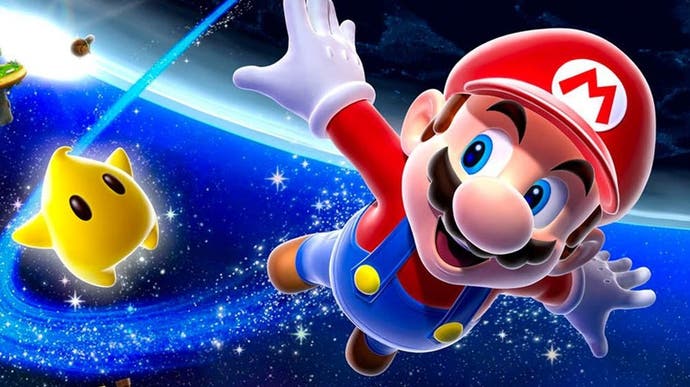Hands-on with Super Mario Galaxy at 1080p on Nintendo's official Wii emulator
Powered by Tegra X1: a preview of how well Switch back-compat could work?
While the wait continues for back catalogue titles to arrive Nintendo Switch, owners of the Chinese version of Nvidia's Shield have been playing a quartet of Wii games for the last few months. These are entirely official emulated titles co-developed by both Nintendo and Nvidia, and as the same Tegra X1 processor powers Shield and Switch alike, we have to wonder: is this our first look at how games like Super Mario Galaxy may look and play on the hybrid console? If so, we're in for a real treat.
First of all, it's worth pointing out just how difficult it is to access these games, even if you already own an Nvidia Shield device. Accessing the title requires a Chinese console (the way we did it) or else visiting Nvidia's Github, downloading and compiling the Chinese version of the operating system and then flashing your console. We attempted the latter but gave up owing to the sheer amount of work required to get the simplest of tasks done. Getting a machine sent across from China actually turned out to be a lot easier and faster.
Once you have the hardware situation resolved, the only way to access the software is via a VPN, while actually paying for the games requires using Chinese social media platforms WeChat or Alipay, where a Chinese credit card is mandatory. The bottom line: accessing the software is incredibly difficult. Getting your hands on these titles is difficult and while we've been very keen on testing Shield's Wii emulator for months now, it's been a long road getting to this point and it requires having friends in China to do a lot of the heavy lifting for you.
The rewards are worth it though. Loading up the game sees a license validation check followed by a Nintendo splash screen, followed by the first curiosity - an Nvidia Lightspeed Studios logo. Lightspeed works primarily on Shield's Android ports, which range from great (Doom 3 BFG Edition) to the not-so-impressive with a range of PC ports on the Shield portal that have fallen short of the standards set by the last-gen consoles. With the logos vanishing from view, Super Mario Galaxy kicks off, looking richer and more detailed than any prior Nintendo release of the game. Based on the Shield marketing, we're promised 1080p versions of the Wii classics - but the truth is rather more fascinating.
Based on our tests, Nintendo and Nvidia's emulation work has a lot in common with Xbox One X's enhancement of Xbox 360 games, in that Super Mario Galaxy benefits from a 3x increase in resolution on the X and Y axis, resulting in a 9x boost to pixel count overall. That yields a curious 1920x1404 resolution - a 30 per cent boost over standard 1080p that's downscaled to the display output. It's a curious state of affairs, but almost certainly down to the fact that Wii games usually operate at around 640x480, with the emulator stretching out the horizontal resolution for widescreen support. The emulator effectively works in reverse, running natively on the X axis and downscaling the vertical instead.
There are other aspects of the presentation worthy of comment too. Looking at Xbox 360 titles enhanced for Xbox One X, we often see a mixture of upscaled 2D bitmaps and vector-based fontography that scales up to the emulator's chosen resolution. Super Mario Galaxy has native type and even some native resolution bitmaps that are subtly different to the originals, while other elements are still based on the 480p core art from the Wii release. It's unclear whether this game received a Chinese launch originally, so there may well be new artwork injected here - there's certainly proof here of a clear improvement over the Western code running under the Dolphin emulator.
There's plenty of other evidence that effectively confirms that Super Mario Galaxy is using emulation as opposed to being some kind of port. Aside from the overlays, there are no signs of any remastered elements whatsoever, so Super Mario Galaxy's original pre-rendered cutscenes present at an upscaled 480p, complete with ugly macroblocking. The quality stands up alongside 480p in-game rendering on the original Wii release, but in this otherwise pristine presentation, the FMVs here look rather poor.

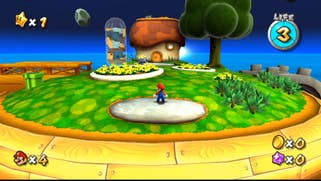

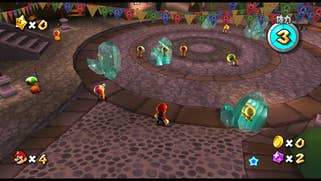
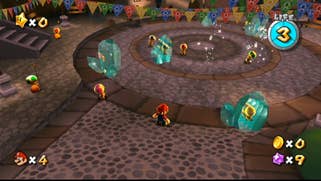
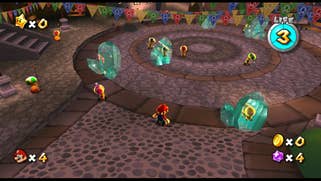
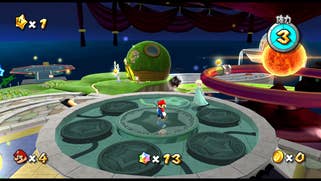

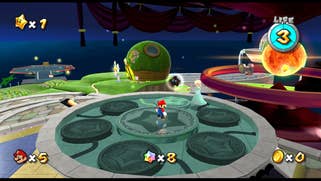

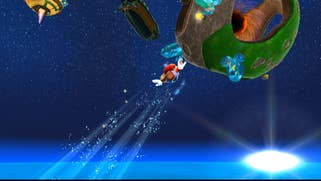
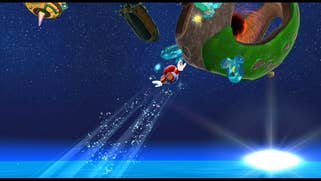
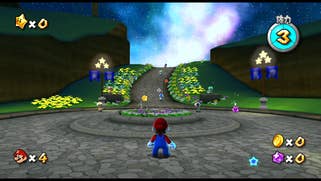
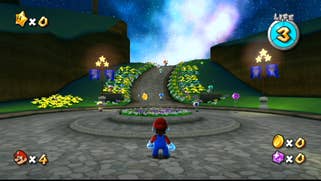
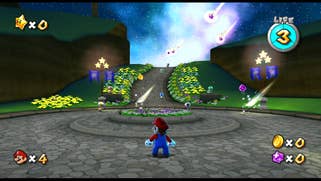


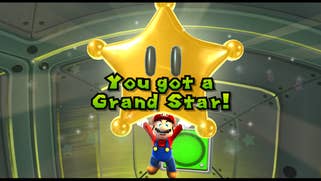
We've talked about the quality of Nintendo's artwork in the past, and just how well it scales up to higher resolutions. Here we again have proof that the stylised nature of Mario Galaxy's design helps its presentation on 1080p or even 4K displays. Unfortunately there's no anti-aliasing used on that clean, 1920x1404 picture, but it does at least benefit from signs of improved texture filtering. In the past, Nintendo hasn't been keen on displaying its work at anything other than original resolution via Virtual Console, but hopefully the results seen here will convince the firm to make use of the Tegra X1's GPU horsepower to show these games at their best.
Overall, it's an impressive showing for Super Mario Galaxy, but not a flawless one as performance isn't quite where it should be. Nintendo's original Wii release ran locked at 60 frames per second and while Nvidia Lightspeed's port gets close, it's not close enough, with dropped frames and microstutter. Bearing in mind the gulf in quality we've seen generally between Switch and Shield titles - even though they use the same Tegra X1 processor - the issue here may well be the Nvidia console's reliance on Android and OpenGL, while games for Nintendo's hardware benefit from a highly refined DX12-like graphics API called NVN, ironically developed by Nvidia itself, which offers much lower level access to the GPU. It's difficult to believe that a Switch version of the same core emulator wouldn't benefit from a lot more 'direct to the metal' advantages not available to Lightspeed with its Android version.
So what are the takeaways from our Super Mario Galaxy testing on Tegra X1? First of all, the fact it's an Nvidia/Nintendo partnership confirms that a highly potent, optimised Wii emulator specifically designed for ARM processors and Nvidia Maxwell GPU technology exists - and Dolphin aside, it's the only example of a Wii emulator in existence at all. Secondly, even if performance on Android can't quite match the throughput of original Wii hardware running at 480p, it's still a long way beyond the excellent Dolphin achieves running on the same Nvidia hardware. This isn't a slight on the Dolphin team's excellent work; rather that Nintendo really knows its own hardware, and has clearly collaborated closely with Nvidia in getting this Android release to run as well as it does.
Beyond that, we're moving more into speculation territory, but the quality of the emulation and the effort put into it seems rather extreme when the end result is a limited release of four games (Super Mario Galaxy, Punchout, Zelda: Twilight Princess, New Super Mario Bros. Wii) only available in one territory, where Shield sales are likely to be microscopic. The undeniable reality is that Wii - and by extension, GameCube - emulation is possible on Switch and the Shield emulator seen here is a compelling proof of concept. We'll be taking a closer look at all of the available titles soon, with a focus on hardware utilisation, how the emulator copes without the bespoke Wiimote controller and how performance holds up on the other games. But right now, all of the evidence points to the existence of a Tegra X1 emulator that's more than fit for purpose for Nintendo Switch - and based on what we've seen here, the results for both docked and mobile play should be absolutely fantastic.
